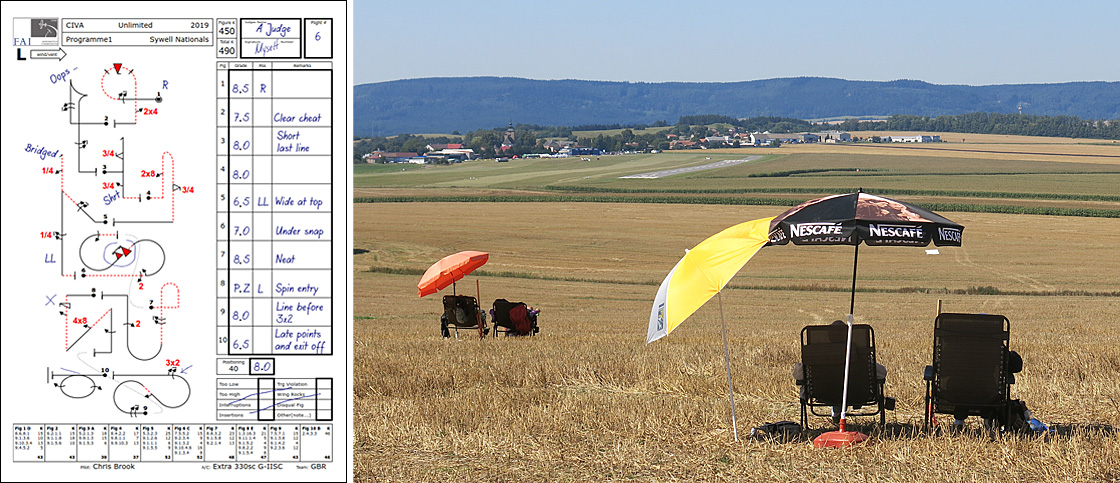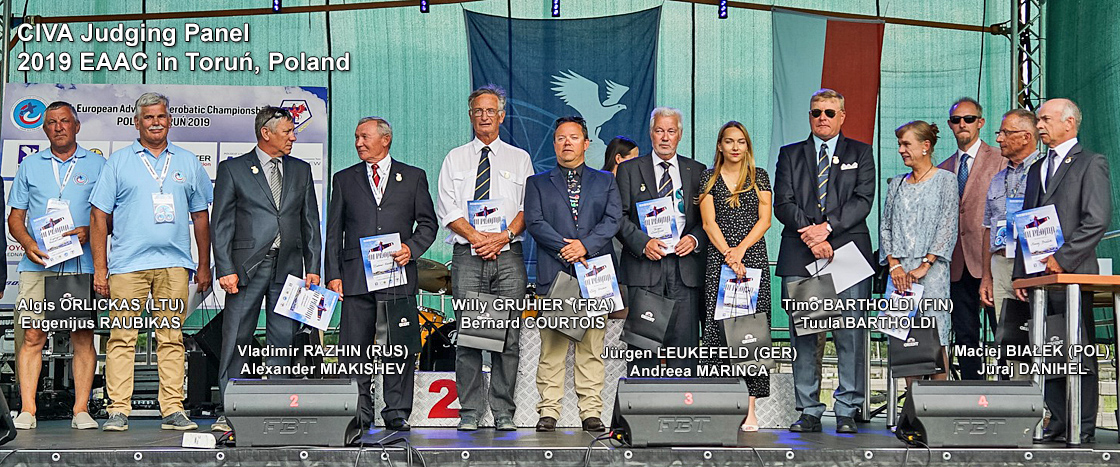
What do Judges actually do?
In order to decide which pilot is best in a reasonably fair and robust way, it is necessary to:
- Define exactly what the competitors have to do.
- Establish a system for measuring how closely the elements in each flight meet this definition.
- Use the measuring system to judge each competitor's performance against what is required.
Grading or judging an aerobatic sequence is not a simple task, since the figures can be complex and applying the quite precise grading criteria requires not only a good deal of human "judgement" but the speed and skill to keep up with the action. To programme a computer to evaluate an aerobatic sequence in real time would be a huge task. People, on the other hand, can be trained to be very proficient aerobatic judges.
To become a good judge you must understand the rules, develop the skill to apply them to grading aerobatic figures, and be confident in your own judgement. You need not be an 'expert' nor even a pilot. In fact, being unaware of the difficulty the pilot may be experiencing can be an advantage, since the rules require that it is the pilots skill and not the aircraft's ability which is being assessed. CIVA provides a range of well-developed material to allow anyone to run a judging seminar in the skills and rules required to become an aerobatic judge - see the Judging Seminar Material page here.
Aerobatic sequences with Aresti figures
In aerobatic competitions every category is conducted within a broad set of detailed regulations that provide:
- For Pilots: a structured image system that uses Aresti cryptographic symbols from which a sequence of figures can be designed, normally in accordance with a set of rules specific to their category and the programme to be flown. In most cases basic manouuvres have rolls added to create each complete figure and a logical system is applied to establish the composite difficulty or K-factor for each one. Some complete figure examples are:

- For Judges: a set of paperwork that matches each sequence on which an opinion for every figure can be recorded as -
- a numeric grade in ½ mark steps from ten down to zero, or
- a Hard Zero (HZ = wrong figure flown / major error seen), or
- a Perception Zero (PZ = a perception-related error seen), or
- an average (AV = unseen or unable to be marked by the judge, for some reason)
- Plus - an overall assessment of 'Positioning' in ½ mark steps from ten down to zero
- And finally - a range of penalties that can be applied to reduce the pilot's final score in case of rule violations etc..
Judging the Performance
Each pilot aims to fly their sequence so that to the watching judges it appears to meet the regulations - importantly it is the appearance rather than the technical reality that matters, as a skilled pilot can do much with presentation to mask shortcomings that may be difficult or impossible to overcome. The task for the panel of judges is to critically assess each performance in order to detect errors and inaccuracies in what is observed when compared to the ideal, and where appropriate to apply downgrades as specified in the judging rules to reduce the perfect 10.0 and reach a final mark for each figure. A Positioning mark is also awarded to reflect the position of each judged element in the flight, and there are various Penalties that may be subtracted from the pilot's final score for observed major faults.
The process is a continuous mix of competence and finesse from the pilot in presenting the performance to give the best possible impression to the judging panel, whose insight and knowledge of the rules must be applied throughout to translate their observations into a fair assessment whenever any individual element of the performance fails to meet the ideal standard. Aerobatic judging is basically a destructive process based upon the judges individual opinions and perceptions of errors and mistakes; they are not there to say how good a flight is but instead to hunt for mistakes and thereby determine the rank order of pilots from the best performance downwards.
The final score for each pilot will be an average of the judges grades less any penalties applied, subject at CIVA championships and most other contests to a rigorous assessment of the judges individual figure grades and calculated scores to detect and resolve bias and unacceptably different marks - see the FairPlay System for more detail.

